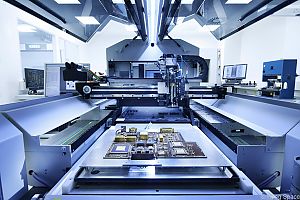Ruag Space sees "quantum leap" in satellite navigation

Every day, satellites deliver important data for climate and environmental research, such as how high sea levels are rising or what effects global warming is having on glacier retreat or on rivers. The more precise the satellite data, the more accurate the scientists' predictions.
Ten times more accurate than previous programmes
This is why Ruag Space, which is based in Zurich among other places, is working on more precise satellite positioning as part of a study for the European Union. According to initial tests on Earth with simulated space conditions, the Ruag software is ten times more accurate than previous programmes, as the company announced.
Position accuracy improved from about 100 centimetres to ten centimetres - ten centimetres better than expected. "This is a quantum leap in highly accurate satellite positioning," said Heinz Reichinger, senior engineer for navigation receivers and signal processing at Ruag Space's Vienna site.
To determine the exact position of satellites, the company's latest navigation receivers combine signals from the European Galileo navigation satellites and the American GPS system. "There is currently still untapped potential in the Galileo satellites. They transmit multiple signals in different frequency bands," explained Martin Auer, who is leading the study at Ruag Space.
With the Galileo High Accuracy Service (HAS), Galileo will offer a worldwide, free and highly accurate positioning service for applications that require higher performance, such as drones or autonomous vehicles. This service should be available in 2022.
Also suitable for satellite navigation
According to Ruag Space, the optimised system does not require any new hardware, but can be installed on existing devices as an update. For the swarms of small satellites that are expected in the next few years, the aerospace company has developed a low-cost navigation receiver that already contains the new software. The higher navigation accuracy will not only provide more precise climate data, but also reduce collisions of satellites, resulting in less space debris.
